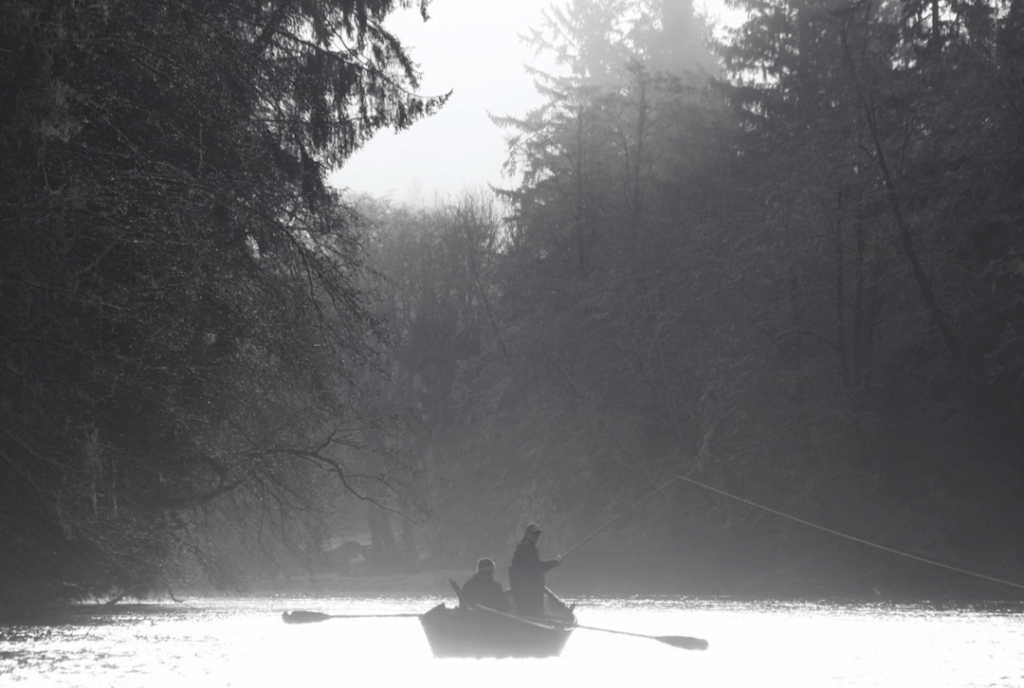Coastal Steelheaders Await Decision From WDFW On Washington’s Winter Season
As Washington Coast steelheaders and communities wait with bated breath for official word from WDFW on the ultimate shape of this winter’s fisheries, the chair of the Fish and Wildlife Commission said he and other members were caught flat-footed about the momentous decision about to be made.
“I certainly understand the conservation piece and I also understand the rural economics piece,” Larry Carpenter of Mount Vernon said at the Friday session of the citizen panel that oversees the state agency and its chief. “But what I really don’t understand, Kelly and Kelly, is that we were not informed about this.”

Kelly and Kelly, in this case, are Susewind and Cunningham, the director of the Washington Department of Fish and Wildlife and the state Fish Program manager.

“We had a Fish Committee meeting yesterday; we could have talked about it,” Carpenter said, referring to a Thursday meeting, the agenda for which lists Willapa Bay and hatchery salmon policies as topics – and certainly weighty ones – of the day.
“I hate that we get caught on a Friday morning with some very distressed public folks expressing their concerns to us,” he added. “It’s a little bit embarrassing to us, so I hope we can fix that in the future.”
There was the faintest whiff of a similar statement Carpenter made in the waning days of the previous director’s tenure, but Susewind is in a far stronger place given efforts on several fronts important to Puget Sound anglers.
Carpenter and fellow broadsided commissioners were reacting to comments that have poured in from, among others, Rod Fleck, the attorney/planner for the city of Forks at the start of the monthly confab.
“The idea of a closure is frightening. We have a winter business sector of our economy that is associated with steelhead,” Fleck told the commission yesterday morning. “So this proposal, even a closure or no action from a floatation device, has the potential of significantly ruining a series of businesses that have already booked trips for deposits … in the tens of thousands of dollars, and just deposits that would have to be returned. And that doesn’t deal with hotels, restaurants, etc.”
A winter closure or boat fishing as well as gear restrictions are two of four options and derivatives on the table to ensure spawner goals are met on Pacific streams from Cape Flattery to Cape Leadbetter.
The primary waters of concern are to the south, but the Forks-based Olympic Peninsula Guides Association raised the alarm via Facebook about the potential restrictions’ effect on nearby waters.
“With the Quillayute River system (i.e., Sol Duc, Bogachiel, Calawah and Dickey rivers) having projected steelhead returns forecasted to exceed escapement goals by 3,376 fish, there are more than enough fish to support an unrestricted and sustainable season this winter in Forks. This is why the Olympic Peninsula Guides’ Association is pushing for a sport fishery in the Quillayute River system including fishing from a floating device.”
The issue has sparked news stories in the Chinook Observer and Peninsula Daily News, a 12-page thread on Washington Fly Fishing and a couple on Piscatorial Pursuits, as well as an article on The Hatch magazine’s blog.
For their part, Susewind, Cunningham and their WDFW staffers have been working overtime to figure out how to deal with chronic below-escapement run forecasts for Willapa Bay, Grays Harbor and other South and Central Coast streams, but also above-escapement predictions on the Quillayute system that could, in theory, ultimately concentrate anglers this winter in the Forks area.
While hatchery winter-runs are already hitting the Humptulips, Willapa and other systems, the real concern is with wild steelhead that begin returning now but primarily in February, March and April on those and others.
That bogeyman – in this case, a very real one – known as ocean conditions are primarily to blame, and will be for the coming few years, it appears.
To get ahead of that, WDFW essentially fast-tracked getting the forecasts for coastal streams out as part of a commitment to improve on last winter’s sudden closure of the Chehalis, according to Cunningham, the Fish Program manager.

“It would be great to have this information sooner, but historically we don’t have this information and we’re not able to share it with the public until about mid-December,” he said.
That’s a function of doing spring spawner surveys, sharing the information with tribal comanagers, crunching the data and working up winter forecasts. The predictions that were put out in late November hadn’t been agreed to by the tribes, indicative of WDFW moving fast.
“The fact is that the information that the public received last Tuesday [Nov. 24] was almost a month in advance of when they typically received it in the past,” Cunningham added.
The back-and-forth between staff and commissioners followed a pre-Thanksgiving online meeting that saw WDFW rolling out four options for this season, ideas ranging from closing the coveted late winter/early spring wild steelhead fishery to expanded gear and boat restrictions throughout the season to only opening the Quillayute system to a blanket coastwide closure.
A final decision from Susewind had been expected by December 1, and it was possible that news would go out Friday afternoon around 5 p.m., but it now looks like we will get the final word at some point on Monday.
Whether the director actually showed his hand Friday morning is debatable, but he appeared to indicate where his mind was at to the commission.
“I think we’re hearing a lot of concerns because we’re talking about some drastic implementation, drastic rules to be implemented. That’s a valid concern and statement, that we’re talking about some pretty aggressive issues. And the reason for that is … we really need to get to this ‘conservation first.’ We keep talking about conservation first; it’s only words until you take the hard, hard steps,” said Susewind.
“The steelhead populations and returns have been declining drastically for … a while. The last time we had a major decline it was following a series of bad ocean years. We’re seeing that same type of ocean condition now. Our forecasts are only a couple or few rivers even meet escapement.”
“We’re at a place if we don’t do something drastic, I think we’re headed for a complete closure anyway in future years. I know it’s tough on businesses whatever we come up … Staff are working late, coming up with other options.”

“Obviously, a complete closure gets us [to a 5 percent exploitation rate on the rivers], but that’s the last thing we want to do. The gear restriction and no fishing from a floating device, we think, gets us back to our 5 percent exploitation, and that’s what’s being contemplated.”
Gear restriction would mean no bait.
The boat fishing ban was initially described as occurring on “select waters,” but more and more it sounds much stronger than that.
The theory is that it would reduce angler impacts on steelhead, as plugging, side-drifting and other tactics are quite effective compared to bank fishing, but it would also affect fishermen less able to get out of the drifter and fish from the shore or wade rocky runs.
Stay tuned.
